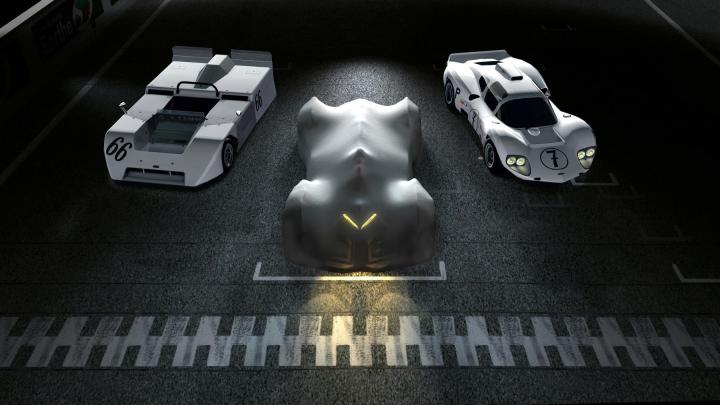
The Chaparral 2X Vision Gran Turismo (VGT), which is currently being showcased at the 2014 LA Auto Show, pays homage to the aforementioned Chaparral racecars that were built from 1963 to 1970.
The vehicles, created by Jim Hall and Hap Sharp, were known for being some of the most innovative cars in motorsports, especially in the field of aerodynamics. The 2E Can-Am competitor, for instance, had a massive, comically proportioned rear wing, but the car’s emphasis on downforce changed the world of racing forever.
Chevy’s concept for Gran Turismo 6 takes Hall’s radical concepts and launches them boldly into the future, the major highlight of which being a laser-based propulsion system.
Yep, a laser-based propulsion system.
“It was created in a no-rules atmosphere to challenge designers and test engineers to deliver the most exhilarating sensations,” said Frank Saucedo, head of the Chaparral 2X VGT team. “Like the original Chaparral race cars decades ago, the Chaparral 2X VGT weaves advanced aerospace technologies into the design to help achieve its performance goals.”
According to Chevrolet, the VGT concept fires off beams of light that form a “laser shroud,” which creates shockwaves to generate “tremendous thrust” to move the car. In combination with a 900-horsepower air generator, the concept will reach a digital top speed of 240 mph and be able to hit 60 mph in 1.5 seconds.
Pushing the boundaries even further, the driver does not sit so much as splays out in an “active prone” position, essentially wrapping the car around the driver.
“Think of it as adapting a wing suit to a racing car, where the driver’s movements control certain aspects of the aero package,” explains Saucedo. “In many ways, the Chaparral 2X VGT is like racing wing suit, with a protective fuselage for ‘flying’ very low to the ground.”
The Chaparral 2X Vision Gran Turismo will be available for download sometime this holiday season.


